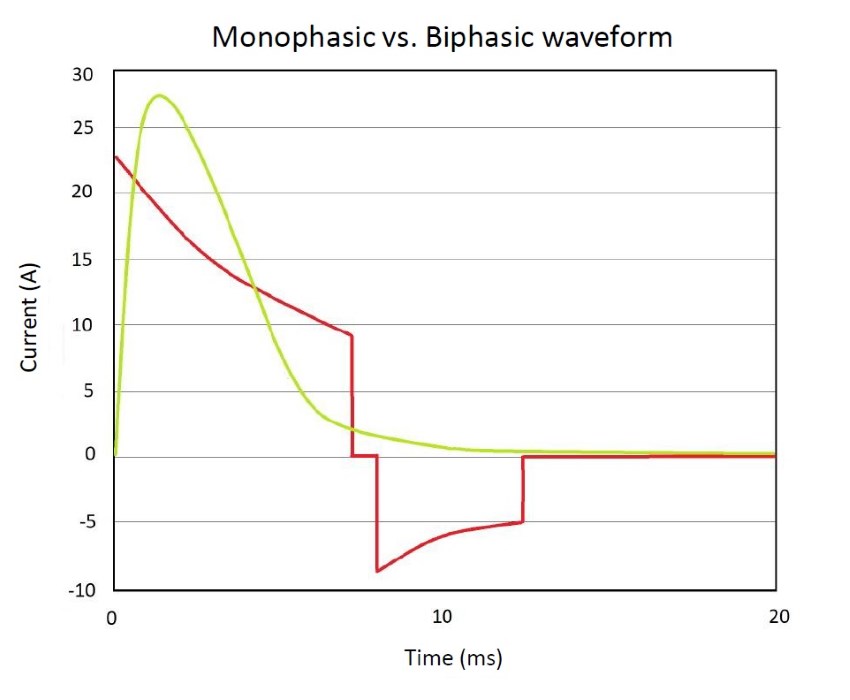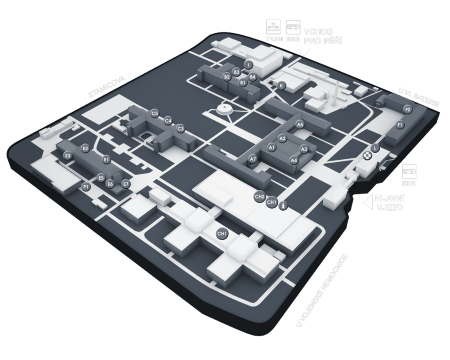These are therapeutic procedures using an electrical impulse to treat various cardiac dysrhythmias. These include defibrillation, cardioversion and cardiac stimulation.
Defibrillator - A device used to diagnose and treat cardiac arrhythmias. Devices are made with or without a monitor, as well as automated versions (AED). Important components are batteries, capacitor, and defibrillation electrodes usually referred to as paddles.
To diagnose heart rhythm, we can use standard "small" electrodes, or use the paddles as "large" ECG electrodes.
To achieve adequate discharge the correct electrode placement is essential (the goal is to "hit" as much of the myocardium as possible).
DEFIBRILATION:
A therapeutic method using an electrical impulse to terminate a malignant arrhythmia (ventricular fibrillation, pulseless ventricular tachycardia) during cardiopulmonary resuscitation. The impulses generated by the defibrillator can be either monophasic (no polarity change) or biphasic (where a polarity change occurs - it achieves both positive and negative values).

CARDIOVERSION:
Electrical cardioversion is a procedure that is used to resolve various supraventricular and ventricular tachyarrhythmias. Unlike defibrillation, however, cardiac output is maintained in the patients, despite the arrythmia (but in most cases is less effective). Thus, it is an elective procedure in which the patient is fully conscious, requiring a only a short period of general anesthesia.
The amount of applied energy differs according to the type of arrhythmia (usually 50-200J). Another difference from defibrillation is the use of so-called synchonization (compliance with R wave on the ECG). With activation of this function, the device discharges during the absolute refractory phase where the myocardium is not excitable and there is no risk of inducing ventricular fibrillation.
CARDIOSTIMULATION:
A method using regular electrical stimulation to treat slow rhythms or recurrent tachyarrhythmias. We distinguish between temporary and permanent (pacemaker implantation) cardiac stimulation. We can temporarily stimulate the patient transvenously, transesophageally, epicardially or transthoracically (external or transcutaneous stimulation).
The application of pulses by external stimulation is reserved for urgent use only and is relatively painful, requiring deep sedation, often with the need to connect the patient to mechanical ventilation.



